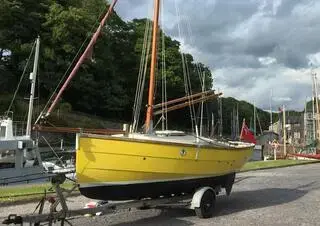
LENGTH:
19.26 ft.
|
YEAR:
1989
LOCATION:
Bangor, Gwynedd,
OFFERED BY:
Dickies of Bangor
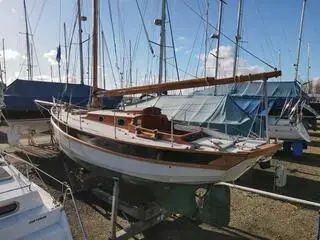
LENGTH:
29.99 ft.
|
YEAR:
1987
LOCATION:
Levington,
OFFERED BY:
CLARKE & CARTER YACHT BROKERS
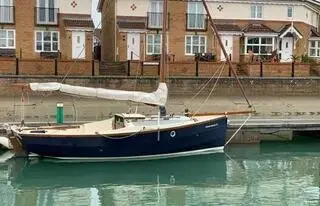
LENGTH:
19.0 ft.
|
YEAR:
1993
LOCATION:
East Cowes
OFFERED BY:
Boatpoint

LENGTH:
35.5 ft.
|
YEAR:
1995
LOCATION:
Plymouth
OFFERED BY:
Barbican Yacht Agency .
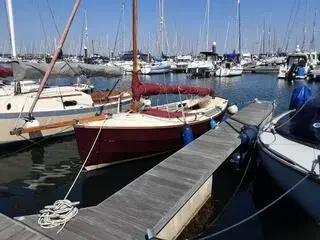
LENGTH:
20.01 ft.
|
YEAR:
1998
LOCATION:
Portland
OFFERED BY:
Boatpoint
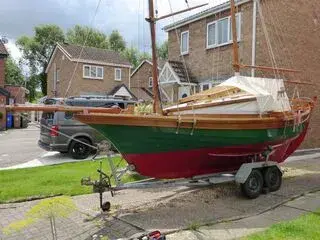
LENGTH:
21.16 ft.
|
YEAR:
1999
LOCATION:
East Yorkshire
OFFERED BY:
Boatshed
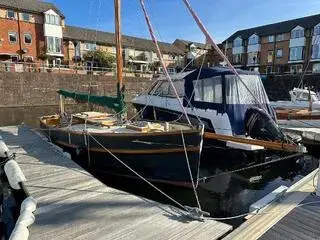
LENGTH:
29.27 ft.
|
YEAR:
1978
LOCATION:
Cardiff
OFFERED BY:
BJ Marine
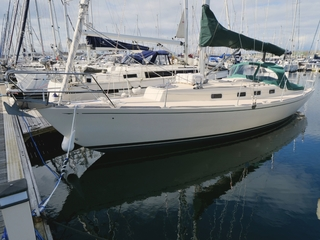
LENGTH:
36.09 ft.
|
YEAR:
2008
LOCATION:
North Ayrshire
OFFERED BY:
Mark Cameron Yachts
Boat not available.
LOCATION
Emsworth United Kingdom
YEAR
1989
LENGTH
35.43 ft.
Condition
Used
Name
Frances Webber
Year
1989
Make & Model
Cornish-Crabbers Pilot Cutter 30
Boat type
Sail
Length
35.43 ft.
Fuel Type
Diesel
Location
Emsworth United Kingdom
Beam
9.51 ft.
Draft
5.25 ft.
This Cornish Crabber Pilot cutter 30 is a well built, traditionally styled family cruiser with plenty of space below deck and enjoyable well-mannered performance. A delight to the eye, these pretty boats attract attention wherever they go and are nice sailing boats with excellent windward ability. The lifting keel is ideal for coastal cruising. "Frances Webber" is presented for sale in excellent condition as she was refurbished 2014 throughout.
This Cornish Crabber Pilot cutter 30 is a well built, traditionally styled family cruiser with plenty of space below deck and enjoyable well-mannered performance. A delight to the eye, these pretty boats attract attention wherever they go and are nice sailing boats with excellent windward ability. The lifting keel is ideal for coastal cruising. "Frances Webber" is presented for sale in excellent condition as she was refurbished 2014 throughout. She also benefits from some excellent modification such as Saloon table converts to 2 twin berths or 2 large singles, Larger aft locker opening to store an inflatable and a lifting bowsprit. New Yanmar 3YM with 265hrs and Stern gear 2016. New Standing rigging 2021. New gas and oven/hob installation 2019. New mains electrical installation 2019. New water tank and pipework 2020
Now benefiting from jobs completed in 2023,
Removed, shot blast and regalvanise centre plate
New nylon bush and stainless pivot bolt for centre plate
New lifting cable for plate
New “stop” bolt for plate to rest on when lowered
New nylon bottom bearing for rudder
New cutless bearing
New Antifouling
Mechanical
New 2017 Yanmar 3YM 30hp Diesel inboard
New 2017 Stern Gear
Last serviced 2021
Drive type Shaft
265 Engine hours
6 Knots Cruising speed, Max speed 7 Knots
1 Fuel tank holding 110 Litres
New cutless bearing 2023
Electrical
3 110ah Batteries, 2 House and 1 Engine
Victron Battery charger
Shore Power with 12v 125amp
Webasto Heating
Navigation
Standard Horizon CP500 Chart plotter complete with GPS
Stowe Log/Speed and Depth
Clipper Wind indicator
Raymarine EV 100 Auto Pilot
Standard Horizon VHF/DSC with AIS signal and remote handset in Cockpit
Compass at Chart table and at Companionway
Sails,Spars and Rigging
New Mast 2014
New lifting Bowsprit 2014
New Standing Rigging 2021
Gaff Rig
Whisker Pole
Mainsail,
Jib with New UV strip
Staysail,
Flying Jib,
Topsail,
Cruising Chute with Snuffer
Interior & Domestic
4 Berth but as Saloon table modification can sleep 6 at a push
Webasto Heating
Open planned sleeping with curtained berths
Blue Upholstery
New Headlining and LED lighting 2021
Water resistant carpet flooring
Saloon Table
1 x Wet locker and 1 x Hanging lockers
Chart table
1 x Heads with Jabsco manual Toilet - Serviced 2019
New Neptune 4500 Cooker and Grill and pipework 2019
Sink,
Fridge Freezer
New 150 Litres Flexi Water Tank and pressurised water system 2020
Lagun table and mount in cockpit
CD player
21" DVD TV
Deck
Construction GRP
Tiller Steering
Flex Teak (Weathered Look)
Electric Windlass
Plough Anchor
4 x Winches
Beaching Legs
LED Nav Lights
LED Anchor Light
Compass at Companionway
Safety
Bilge Pumps 1 auto and 1 manual
2 x Jackstays
5 x Fire Extinguishers
1 x Fire Blanket
Canvas
Sprayhood
Tonneau cover
Sailcover
Bow Spirit cover
Miscellaneous
Jobs completed in 2023
Removed, shot blast and regalvanise centre plate
New nylon bush and stainless pivot bolt for centre plate
New lifting cable for plate
New “stop” bolt for plate to rest on when lowered
New nylon bottom bearing for rudder
New cutless bearing
New Antifouling
Miscellaneous
Length overall is 39’
With bowsprit lifted 35'
Length over Deck 30'
Length of waterline is ’25' 9"
Draft 3'6" to 5'3" with Centerboard down
Miscellaneous
Boarding Ladder
2 x Boat hooks
A very well known Boat in the Cornish Crabber Club and the Gaffers Association
Documentation
Bill of Sale Clearing 5 Year titles
SSR Certificate
For a full, detailed specification with additional photographs and direct contact details for the listing office visit our website at The Company offers the details of this vessel in good faith but cannot guarantee or warrant the accuracy of this information nor warrant the condition of the vessel. A buyer should instruct his agents, or his surveyors, to investigate such details as the buyer desires validated. This vessel is offered subject to prior sale, price change, or withdrawal without notice. Unless otherwise stated on the specification sheet the following presumptions are made NOTE - Please ring our offices prior to visiting, as the boat may be unavailable for viewing or located at a different marina.
Sail drive and shaft seals are more than 5 years of age
Gas hoses and regulators are over 5 years old
Standing rigging and sails are more than 10 years old
Cruising Speed
6.00
Engine Count
1
Engine Horse Power
30
Engine Tankage
110.0
Max Speed Knots
7.00
The Cornish-Crabbers Pilot Cutter 30 is 35 feet long that boasts a 9.5 feet beam. This 1989 diesel Cornish-Crabbers Pilot Cutter 30 with 30 horsepower is capable of reaching a maximum speed of 7.00 knots and a cruising speed of 6.00